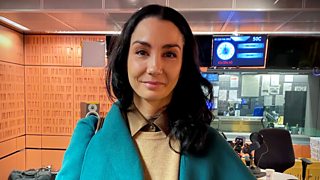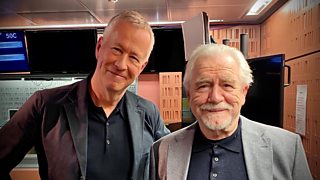10 things we learned from ballet star Tamara Rojo's This Cultural Life interview

Spanish ballet star Tamara Rojo has enjoyed a 20-year stage career, winning critical and popular acclaim for her performances in all the greatest classical ballet roles. Now, after a decade running English National Ballet, and making her debut as a choreographer, she is preparing to take on a new job as artistic director of the San Francisco Ballet. She will be the first woman to hold the role.
On Radio 4's This Cultural Life Tamara tells John Wilson about her most formative cultural influences, from watching Björk on the silver screen, to dancing with her dad, to falling in love on stage.
1. She began dancing in the kitchen with her father
The household Tamara grew up in was not particularly artistic but it was “full of music,” she recalls. “My parents believed it was bad for children to watch television so all I had was a record player and a very big collection of records… I was an only child and I did spend a lot of time dancing by myself in the living room.”
Dancing at home to her parents’ music was her first experience of expressing herself. “I didn’t know that what I was doing was basically choreographing or improvising. I thought everybody just danced to music. My dad was a great dancer – he loved rock and roll – and we danced together often in the kitchen, in weddings.”
“I got used to the idea that if you put music on you dance to it. You don’t sit and listen to it.”
2. She found ballet by accident – because it was raining
“I found ballet by accident,” says Tamara. Her mum was late picking her up from school one day and because it was cold and rainy a teacher told her to shelter in the gym. There, a ballet class was under way.
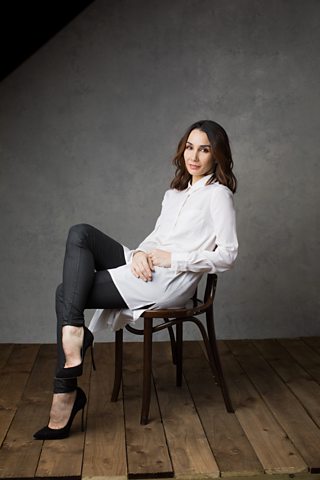
“I had never seen anything like it,” says the dancer. “I absolutely loved it from the very first second and when my mum came to pick me up I said, I want to do this, I want to do ballet. And it took me I think six months of crying until I convinced them.”
As an introverted only child Tamara found school difficult and often overwhelming. But suddenly there was a “little island of peace” that she could go to. It was “a quiet experience of getting to know your body and making it do beautiful things,” she recalls.
3. Winning the Paris International Dance Competition was “transformative”
Tamara became a professional dancer at 17, dancing principal roles as she toured Spain with a company. In 1994, aged 19, she won gold and a Special Jury Award at the Paris International Dance Competition.
Winning was “transformative”, says Tamara. “Not so much because of the doors that it opened, internationally, but because it did give me reassurance and courage and self-esteem, to know that I did have value as a dancer.”
“It was very difficult to know,” says Tamara. “There was no internet, there was no Instagram, you had no reference points. All I could see were the VHS films of people like Mikhail Baryshnikov and Sylvie Guillem and so I thought that unless you were that good you were no good at all!”
“I didn’t really enter the competition thinking I had any chance in hell of winning.”
4. She loved life in Glasgow with the Scottish Ballet – but not the rain!
Her unexpected success in Paris led to her joining Scottish Ballet in Glasgow. “I absolutely loved it,” says Tamara. “It is a fantastic city. It’s a city full of fun and students and also culture. The people are so friendly, so welcoming.”
Suddenly she was learning all the classic ballets. It was a steep learning curve. “All I did was dance and study,” she says. “I learned so, so much in such a short period of time.”
But acclimatising to the weather was tough. She had gone from the warmth of Madrid to a wet and cold Scotland. “It rained every day,” she recounts. One day she left the house in a “little dress, all confident that it was going to be a sunny day” but by midday it was raining again. “I called my mum and said I can’t live here – it rains every day! She laughed at me of course.”
5. Francis Bacon showed her it was possible to reinvent a classic work, and still pay homage to the original
Seeing Francis Bacon's studies of the Velazquez portrait of Pope Innocent X at the National Gallery in London made Tamara reassess approaches to classic works of art and inspired a desire to reimagine works from the classical ballet canon.
“That was the beginning of an awakening for me about classical ballet and how you can, from admiration of an original work, do a new work that is completely different and far more gutsy and less structured in its technique,” she says. “It was in that exhibition that I started to form the idea in my head that you can take inspiration from someone else’s artwork and take it to an audience that is no longer familiar with those traditional structures of the artform, that are in fact familiar with different, more expressionistic ways of communicating, and show them something more.”
At the ENB, she invited choreographer Akram Khan to retell the classical ballet, Giselle. She then presented Khan’s contemporary Giselle before the traditional version in the same season. “What I was trying to achieve when I invited an artist like Akram to recreate Giselle was that experience I had with Francis Bacon,” she says.
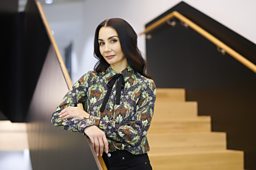
6. She found being a ballerina mentally demanding as well as physical
Being a prima ballerina is “physically demanding,” says Tamara, “and also if you want it to be it can be very mentally demanding in that if you want to study and you want to do all the research of all the roles it’s a fulltime job. It is all day, all night. Very often in the night you’re still reflecting and thinking, either about the performance you just did or the role you’re about to do.”
I loved the exploration of characters... I’ve lived hundreds of lives in just one life.
But, although consuming, “it’s also very fulfilling,” she says. “I think that few people have the luck that I had and the privilege that I had, of being able to make a profession of the thing you love to do. I loved being a ballerina… I loved the exercise, I loved the physical demand, I loved being tired, physically tired. And I loved the exploration of characters.”
“I’ve lived hundreds of lives in just one life,” she says.
7. She fell in love with her dance partners
Tamara says she also loved “being partnered and falling in love with so many wonderful men in the studio and on the stage.”
“You fall in love, you do,” she says. “Every evening, or sometimes in the studio too if you’re lucky, you fall for people and you feel loved and accepted.”
“I was very lucky. I had wonderful, wonderful partners that I danced with on the stage, that are genuinely generous in that they are willing to come with me. I think I do have a tendency to do it full out every day,” she laughs. “If I’m rehearsing, I want to feel something as well as achieve something.”
8. She had “huge imposter syndrome”
Tamara is regarded as one of the greatest dancers of her generation but she doesn’t think she ever really believed she was a cut above the rest. “I had, as a dancer, a huge imposter syndrome. Enormous. Which is I think why I always tried to disappear in the characters,” she says. “I was hiding all the time behind these amazing people that I was portraying.”
“But the one thing I did, the one thing I can take some ownership of, is that I worked really, really hard at my technique. I knew I didn’t have the flexibility of other dancers. I knew I didn’t have the proportions; I didn’t have the length. There were so many things I did not have. But I could have a strong technique, because technique is just work.”
“I worked until I knew I was in control of my technique all the time.”
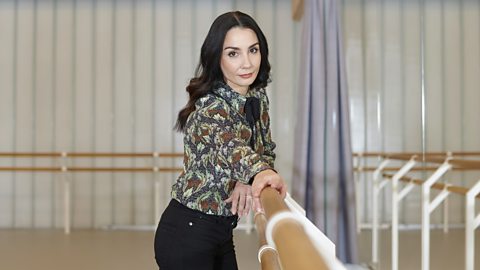
How Francis Bacon opened my eyes to new creative possibilities
Bacon's art showed Tamara Rojo how to reimagine works from the canon of classical ballet.
9. Björk was a huge influence on her
“I’m a huge fan of Björk,” says Tamara. “There is something so strange, moving about her voice. She has that combination of almost childlike innocence and joy for life and then a darkness, undercurrent. I love that. She seems to be able to see joy and beauty and also be slightly dangerous underneath, or wild.”

She describes Björk’s “extraordinary” performance in Lars von Trier’s film Dancer in the Dark as being a huge influence on her: “I saw another artist that escaped in her roles in the way that I did and that I hadn’t seen that often. I saw a lot of very analytical artists that were fantastic in their skill to portray characters with dramatic technique, but Björk goes beyond that and I guess I recognised that and it moved me.”
With every take that they filmed, Björk was completely immersed, says Tamara. She never saved anything for herself; she never cheated us. “She always gave it all, and that I admire and that’s what I aspired to whenever I was on the stage. I really wanted to give all of it.”
10. Britain has shaped her creativity “enormously”
The artistic director says the 25 years she has spent working in Britain has shaped her creativity “enormously.”
“I was a child really when I arrived. I knew very little about performing arts.” Here, she was able to experience a wealth of it. “You have amazing theatres all over the country creating original work all the time. I’ve had the time of my life going to the theatre two, three times a week, watching the most amazing performances.” And it’s not just theatre, she says, but music, galleries and exhibitions too. “It really is extraordinary.”
She is also inspired by the way that Shakespeare is “presented and reinterpreted” all the time. “It’s how people here approach that archive of work, that traditional work in theatre, and how brave they are in picking it apart a million times.”
-
![]()
Listen to This Cultural Life
Spanish ballet star Tamara Rojo tells John Wilson about her most formative cultural influences.

More deep conversations on Radio 4
-
![]()
The Archbishop Interviews... Tony Blair
The former PM reveals that the values and principles of his faith underpinned his career.
-
![]()
This Cultural Life: Brian Cox
Actor Brian Cox talks to John Wilson about the experiences and influences that have shaped his stage and screen career.
-
![]()
Sir Alex Ferguson: Made in Govan
From tenements to toolmaking to tournaments, Sir Alex Ferguson reflects on how his early life shaped his extraordinary career.
-
![]()
Desert Island Discs: Lyse Doucet
Lauren Laverne's guest is the ���˿���’s award-winning chief international correspondent.
